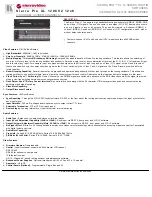
25-9
Interface name
For a device operating independently (that is, the device does not belong to any IRF), its interface
name is in the following format: member ID/slot number/interface serial number, where
z
By default, member ID is 1.
z
After a device leaves an IRF, it continues using the member ID when it was in the IRF as its
device ID.
z
Subslot number is the number of the slot in which the LPU resides. For a box-type device, LPUs
are fixed on the device, so the slot number is a fixed value. On the Switch 4510G series, the
subslot on the front panel is numbered 0, and subslots of the two expansion slots on the rear
panel are numbered 1 and 2 from left to right.
z
Interface serial number is dependent on the number of interfaces supported by the device. View
the silkscreen on the interface card for the number of supported interfaces.
For example, GigabitEthernet 1/0/1 is an interface on the independently operating device
Sysname
.
To set the link type of GigabitEthernet 1/0/1 to trunk, perform the following steps:
<Sysname> system-view
[Sysname] interface gigabitethernet 1/0/1
[Sysname-GigabitEthernet1/0/1] port link-type trunk
For an IRF member, the interface name also adopts the previously introduced format: member ID/slot
number/interface serial number, where
z
The member ID identifies the IRF member on which the interface resides
z
Meaning and value of the subslot number and the interface serial number are the same as those
on an independently operating device.
For example, GigabitEthernet 1/0/1 is an interface on IRF member slave 3 (member ID is 3). To set the
link type of GigabitEthernet 1/0/1 to trunk, perform the following steps:
<Master> system-view
[Master] interface gigabitethernet 3/0/1
[Master-GigabitEthernet3/0/1] port link-type trunk
File system name
You can use the name of the storage device to access the file system of an independently operating
device. For the naming rules of a storage device, refer to the
File System Management Configuration
in the
System Volume
.
For example, flash is the storage device on the independently operating device Sysname. To back up
the file
aa.cfg
under the root directory of the flash to the
test
folder, perform the following steps:
<Sysname> mkdir test
...
%Created dir flash:/test.
<Sysname>copy aa.cfg test/aa(20080714).cfg
Copy flash:/aa.cfg to flash:/test/aa(20080714).cfg?[Y/N]:y
..
%Copy file flash:/aa.cfg to flash:/test/aa(20080714).cfg...Done.
<Sysname> cd test
<Sysname> dir
Directory of flash:/test/
















































